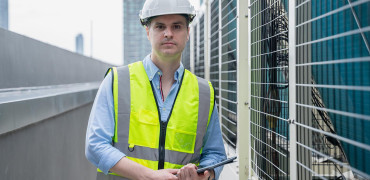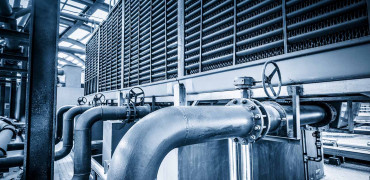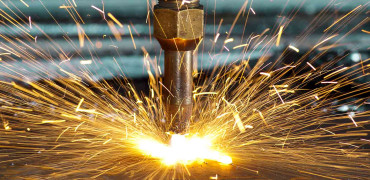Should getting to Net Zero be cheap? Perhaps a better question is, how much are we prepared to pay to reduce the carbon footprint of our buildings?
And the answer to that will depend on the priorities of the building owners and tenants.
There are of course, low-cost steps to lowering energy use (and reducing operational carbon). It might be sensible to consider switching your energy provider to access renewably generated electricity. This may even save some costs.
One of the most important activities is to develop a clear understanding of the building’s current performance.
Checking on meter readings (perhaps even finding the meters, in some cases) around the building can be a simple but effective first step. Knowing your annual energy use is a vital starting point for any improvement programme.
We can help equipment run smoothly and spot problems before they lead to breakdowns
Take back control
Another cost-effective carbon reduction tactic is to ensure you’re making full use of building control systems already in a building. This can make a significant impact on energy consumption.
This can be as simple as ensuring equipment such as heating and cooling is set to switch off automatically so that it doesn’t run in empty spaces. Simple time controls can also keep out-of-hours operation to a minimum.
Picking off the low-hanging fruit of carbon reduction is a great start, but at some point, the facilities team will face the reality that capital expenditure can’t be avoided.
Again, there are some lower-cost options that can have an impact, such as changing to LED lighting. Not only can this save more than 50% on energy use compared to old-fashioned lighting, but it also lasts longer.
Optimising HVAC
HVAC systems are big energy users in most buildings, so it’s critical to consider how to optimise their operation. A great first step is to talk to your service and maintenance partner about your goals.
If you want to reduce the operational carbon of your building, having the whole team on board will make it much easier to achieve.
At Mitsubishi Electric Service & Maintenance, we work with several clients to help them monitor equipment such as chillers for optimised energy performance.
We can help to keep equipment running smoothly, and spot problems before they lead to breakdowns.
When HVAC equipment starts to falter, it generally leads to higher-than-usual energy use, so identifying issues promptly keeps energy waste under control.
Eventually, however, there is a cost to achieving low carbon buildings that can’t be avoided.
Whether switching out gas boilers for VRF systems or heat pumps, or making use of heat recovery technology, upgrading a building for a low-carbon future does cost money.
For FMs in the commercial property sector, there is probably going to be less of a struggle accessing budgets for these upgrades. With changes to Minimum Energy Efficiency Standards for non-dwellings on the horizon, it seems likely that building owners will have to achieve a minimum EPC of C by 2027 and B by 2030.
Top rents for best in class
And if legislation is not a driver, then building value is. Time and again, leading property consultants are noting that office tenants are making a flight to quality – seeking out (and paying top rents for) best-in-class office space with strong sustainability credentials.
In fact, many potential commercial tenants are only looking at buildings that meet certain sustainable criteria such as EPC A-rating or BREEAM Excellent.
In the public sector, the commercial incentive is not so direct. However, across the estate, organisations such as the NHS have set their own Net Zero carbon goals, so investing in low-carbon equipment and maintenance programmes to support them are just as important.
For example, the IWFM reported that Greater Manchester’s public buildings reduced their CO2 emissions by 7,000 tonnes between 2021 and 2022. Programmes included installations of solar PVs, air source heat pumps and energy efficient chillers.
FM teams are increasingly involved in delivering corporate ESG (environmental, sustainable, governance) policies and programmes in organisations. Looking at the costs of projects will always be important, but increasingly the drive for low-carbon buildings means that we must consider the value of activities in terms of their impact on our environment.
Kris Swiderski is Head of Service and Maintenance




